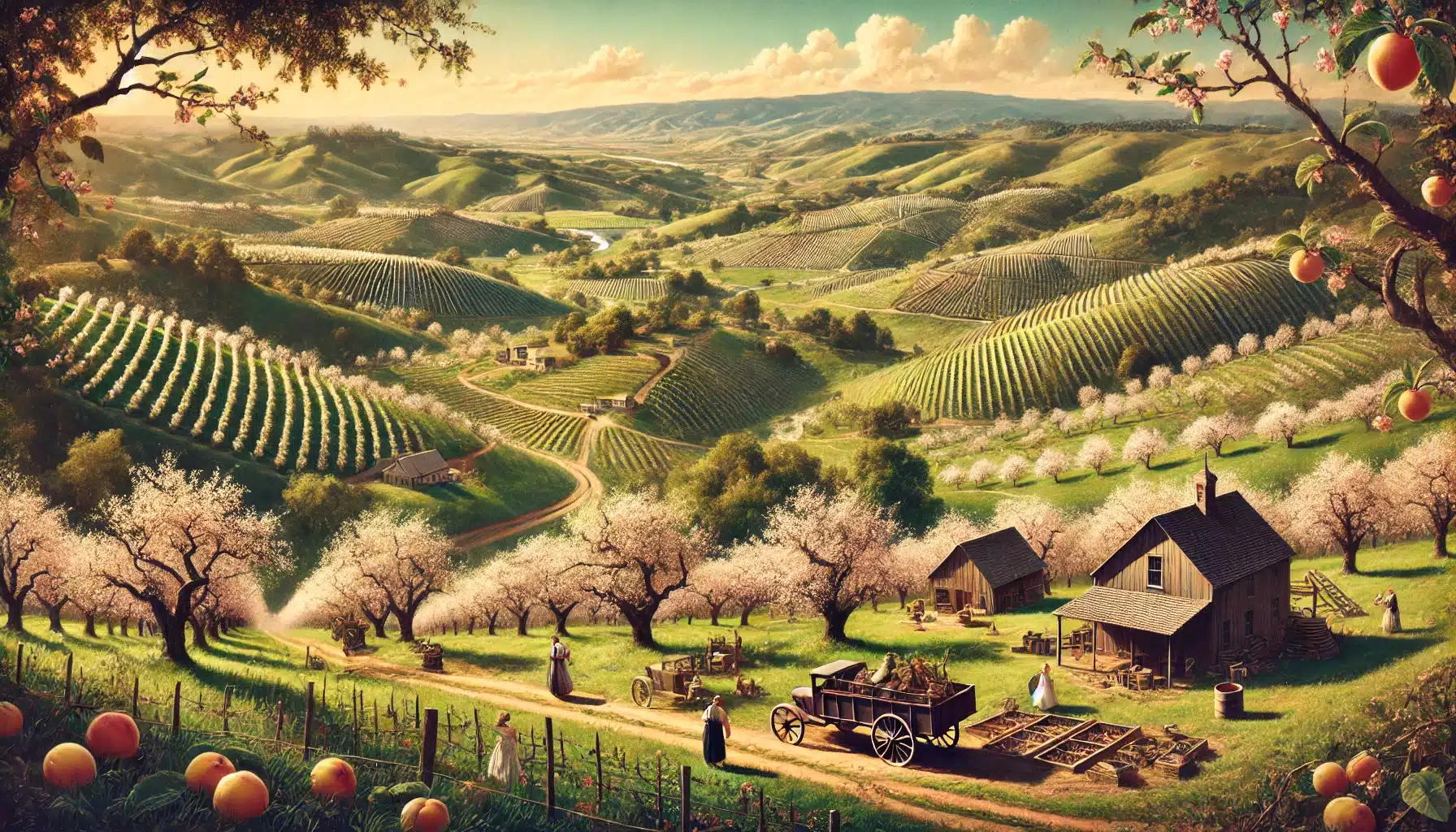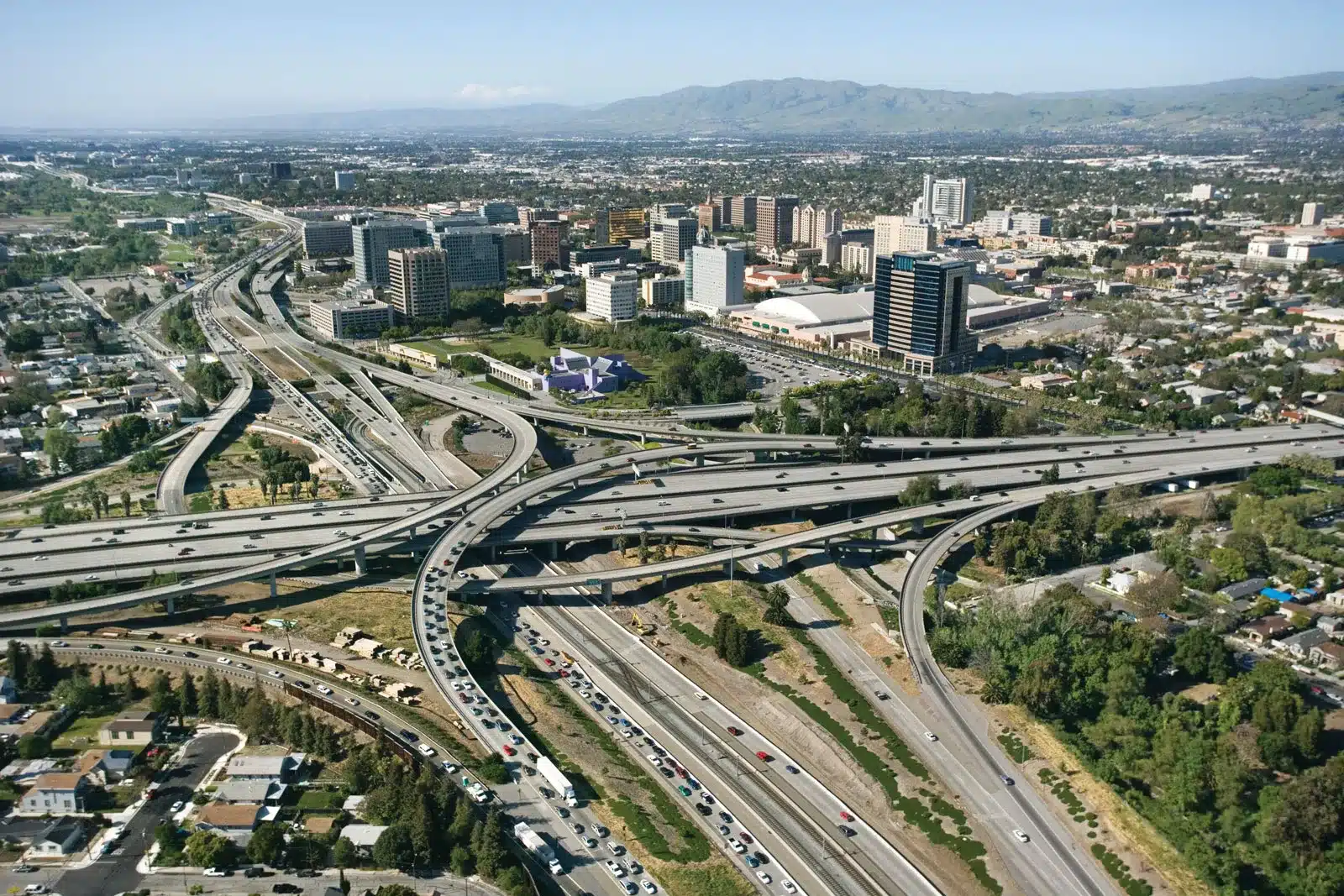How far we have come.
Or is the verb, “fallen”?
Take “Silicon Valley,” whence arrives fantastic technology on a nearly weekly basis.
That tech has brought many things, some brilliantly useful, not all of them good (see the new “Special Report”). One can ask to see the fruit: overall, has high-tech brought us closer to God?
Perhaps Silicon Valley in its original form did that much more proficiently.
For do you know what they once called that territory south of San Francisco, engulfing Palo Alto and San Jose?
Answer: “Valley of Heart’s Delight,” or “Happy Valley.”
Here’s how one of its own products, the art-creating A.I. Dalle, pictures it:
Now it’s the land of Google, Apple, Meta (Facebook), and Intel, to name a few firms—companies that have taken us far beyond nature to artificial realities.
At one time the land of tech was simply part of California’s quiet and picturesque Santa Clara Valley, but the almost poetic nickname for that section of it evoked its lush orchards, mild climate, and agricultural bounty—especially the blooming apricot, cherry, and plum trees that carpeted the region each spring.
That’s God’s “tech.”
And we’ll never equal, let alone surpass, it.
Through much of the nineteenth and early twentieth centuries, the valley was dotted with family farms, small towns, and fruit canneries, supplying produce to the entire nation. It was one of the most productive agricultural areas in the United States.

The shift from fruit to firmware began around World War II, when Stanford University played a pivotal role in attracting defense and electronics contracts. Its provost, Frederick Terman, encouraged faculty and graduates to start tech companies locally instead of moving east. He helped establish the Stanford Industrial Park in 1951 (now Stanford Research Park), offering affordable land and close access to Stanford’s academic resources.
Terman’s influence bore fruit through his protégés, William Hewlett and David Packard, who famously started Hewlett-Packard in a Palo Alto garage in the late 1930s—a site now mythologized as the “birthplace of Silicon Valley.”
And before it was orchards?
Indigenous peoples thrived in its mild climate for thousands of years, particularly the Ohlone people, living in harmony with the land, their village-based society sustained by the abundant acorns from live oaks, seeds from native grasses, and the rich bounty of the San Francisco Bay.
The true pivot from ancient to modern history began with the Spanish colonial enterprise. In 1777, the De Anza Expedition established the Pueblo of San José, the first civilian settlement in Alta California, chosen for its strategic location and fertile soil. More significantly, that same year, Father Junípero Serra founded the Mission Santa Clara de Asís, the eighth in the chain of California missions. The mission system was an instrument of colonization, radically altering the landscape and its people.
The Franciscan padres introduced European agriculture on a systematic scale: vast fields of wheat, barley, and corn; extensive vineyards for wine and brandy; and immense herds of cattle, sheep, and horses. They brought the technology of irrigation—acequias (canals)—
The iconic “Palo Alto” tree, which would later give its name to a town and a world-famous university, was a solitary redwood that served as a landmark for travelers during this period.
And so there, in a nutshell, you have it.
How the mind’s eye enjoys the picture of those past eras and laments much of what we have wrought on the landscape.
+



